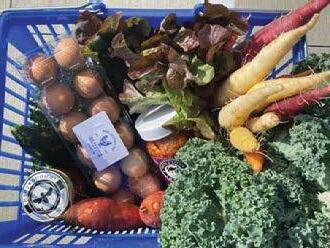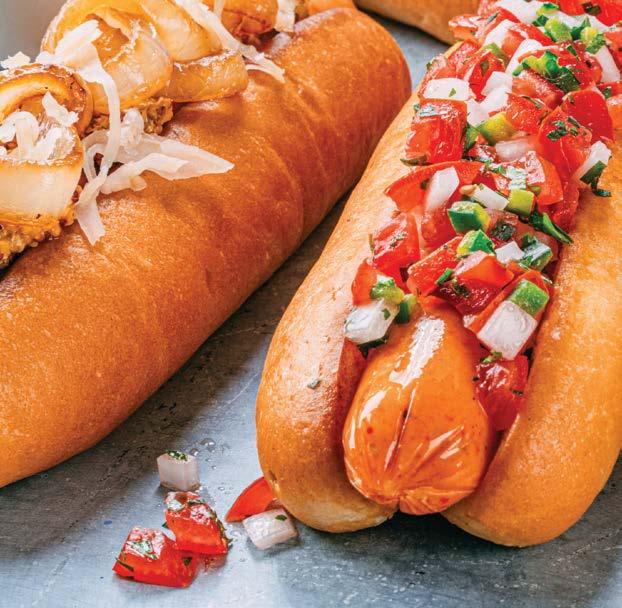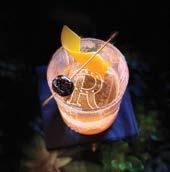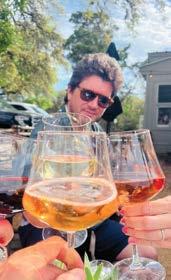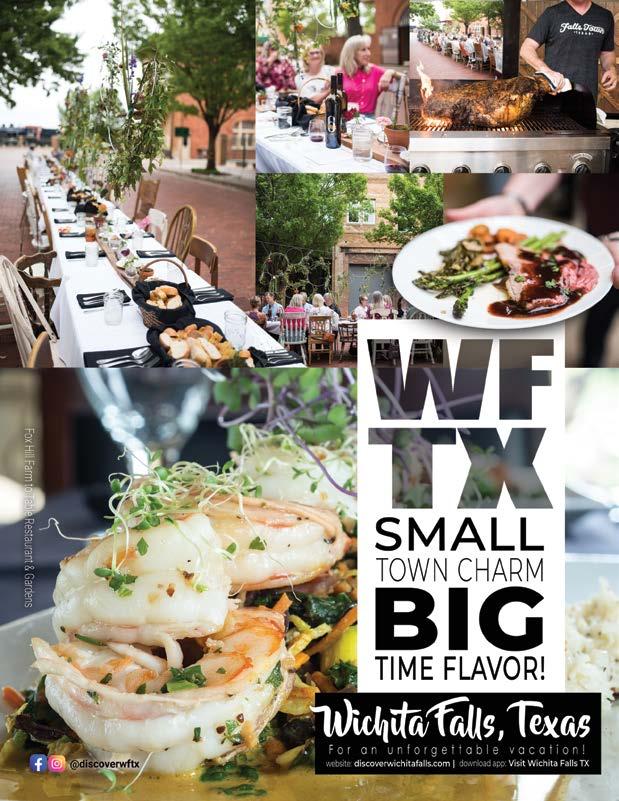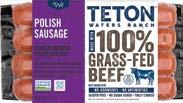
COME


COME
Urban Harvest cultivates thriving communities through gardening and access to healthy, local food. We are improving the lives, soil, and plates of all Houstonians through: the Farmers Market, Organic Gardening & Nutrition Education, Healthy Food Access, and Community Gardens.

Basic Organic Gardening, e Home Orchard, Making Mosaics: Garden Beauti cation, Make and Take Tea, Seed Starting, Native Plants of Southeast Texas, Eat Your Landscape and much more!
EVENTS

Secret Supper September 21 from 6:00 pm – 9:00 pm Fall Festival October 28 from 9:00 am – 11:00 am

Sunday Supper November 5 from 5:30 pm – 9:00 pm
LEARN MORE Visit urbanharvest.org
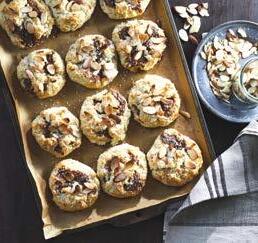
Poet Joy Harjo wrote that “The world begins at a kitchen table. No matter what, we must eat to live.” It’s a statement that on the surface seems so obvious, so simple. Yet it’s something often overlooked. Food is key to our individual survival. It’s also why we gather around that kitchen table, the wafting aromas of freshly baked bread or an herb-infused soup drawing us together with our first steps toward building community.
The people featured in this issue are, in their own ways, building, maintaining and/or revitalizing communities through food.
Chris Williams, chef and owner of Lucille’s, and Jeremy Peaches, a multigenerational farmer, are trying to rejuvenate under-resourced neighborhoods by fostering an integrated food system that directly connects residents to community-based farms and jobs.
Sade Perkins is working to create a place where neighbors have better access to fresh foods by connecting them with farmers, ranchers, beekeepers, bakers, other food producers and each other.
Cookbook author Shubhra Ramineni is making that table a more appealing draw by integrating and adapting the recipes of her Indian ancestors with ingredients she has found in America.
Building communities, as the folks mentioned above are showing, is more than uplifting words — it’s work. For our modern communities to thrive, people need, as Williams makes clear, good paying jobs and we need to support the community-focused establishments — whether they are farmers, makers, markets, cafés or nonprofits — that are providing them. In the following pages, you’ll find some worthy of that support.
As we enter what are hopefully some cooler months, may your table be full of family, friends, community and good food.

PUBLISHER
Monique Threadgill monique@atxpublications.com
ASSOCIATE PUBLISHER/ CREATIVE DIRECTOR




Ralph Yznaga ralph@atxpublications.com
EDITOR
David Leftwich david@ediblehouston.com

COPY EDITORS
Claire Cella Stacey Ingram Kaleh

CONTRIBUTING WRITERS
Ashley Brown Stacey Ingram Kaleh
Aries Payne
Shubhra Ramineni
Pauline Stevens
Colin James Sturdevant
CONTRIBUTING PHOTOGRAPHERS
David “Odiwams” Wright Pauline Stevens
ADVERTISING SALES
Grace McCormick grace@atxpublications.com info@ediblehouston.com
DISTRIBUTION
Nathan Simmons tmem23@gmail.com
CONTACT US
5524 Bee Caves Rd., Ste. J-4 Austin, TX 78746

512-441-3971 info@ediblehouston.com ediblehouston.com

I think bourbon enhances everything consumable. It can be woody, vanilla-y, fruity and/or spicy. I sometimes put it in my homemade cold brew during the holidays. I’ll add it to stews or use it to baste beef such as short ribs. Heck, you can even drink it straight. I had never really cared for cajeta (a goat milk caramel sauce) because I never cared for caramel. But holy cow! Bourbon Cajeta? Yes, please. Blue Heron Farm’s Bourbon Cajeta is unrivaled among the toppings I use for ice cream or gelato at home. It’s sweet, tangy, salty and bourbon-y. The bourbon, which hasn’t been cooked off to the point of being bland, gives this cajeta a smoother texture. I like to add it to coffee-flavored ice creams and let the bourbon cajeta just do its magic. Nothing else is needed. You can go the extra mile with chocolate sauce and whipped cream, but there’s no need, friends.
This delicious mixture incorporates goat milk from Nubian goats humanely and sustainably raised by Lisa and Christian Seger on 10.5 acres near Waller. Now, where can you get your hands on this holy bourbon cajeta delight? Look no further than the Urban Harvest Farmers Market (Buffalo Speedway and Westheimer) on Saturdays from 8 a.m. to 12 p.m. You can also find it at Central City Co-op and Houston Dairymaids, or you can order it online at blueheronfarmcajeta.com.

What Texan doesn’t like sugar, spice and everything nice? Months ago, I bought a friend, a former Texan now residing in New Mexico, a 12-ounce bag of candied pecans at the Memorial Villages Farmers Market. The wafts of cinnamon lulled me into a temporary state of need. Okay, maybe more a state of want. I broke into the bag, stuffed my cheeks like a squirrel and felt no guilt — until a week later.
Brenham, the company’s namesake town, is rooted in my childhood, from days traveling to my grandfather’s farm in Blue, TX. This contributed to my desire to try this product. This gourmet food company has been around since 2013 and sells jellies, jams, spiced and mixed nuts, salsas and sauces. The entire Smith family — Brian Sr., Connie, Justin and Brian Jr. — has a hand in making, packaging and selling the products. What I love the most about these candied pecans, besides that they are made by a family business from the heart of Texas, is that they’re darn delicious and not overly sweet. Also, some companies tend to burn the pecans, which kills the chorus of flavors, but the Smiths cook them perfectly. When you bite into these gilded pecans, the center retains the nut’s moisture, the salt gives it a buttery feel, and the sugar and cinnamon harmonize.


You can find them at farmers markets around Texas, but I always get my fix at Memorial Villages Farmers Market, which takes place Saturdays 9 a.m. to 1 p.m. at First Congregational Church of Houston at 10840 Beinhorn Rd. Hunters Creek Village. For more products and locations, visit their social media or website at brenhamkitchens.com.
During the first wave of COVID-19, at the height of summer in Houston, I went on an adventure to blog about the local honey we used at SweetCup Gelato, where I used to work. My big body could barely handle the heavy August air that held the heat of what felt like the inside of a mascot suit. I went with Nicole Buergers, founder of Bee2Bee Honey Collective, and one of her team members to check on an apiary atop the Houston Center for Contemporary Craft. The smell of campfire smoke, the whir of an orchestrated storm of dancing bees, and the honey-hugged frames checked for hive health are what I mostly remember. I’ll never forget that visit. I’m reminded of it each time I eat the honey from Bee2Bee.
What makes it so great? There’s a unique bouquet — an adventure — in each jar that lets your palate explore Houston’s terroir. Bee2Bee is a collective using bee-centric practices to harvest honey. Each honey comes from a different Houston neighborhood and expresses the distinctive flavors of the flora and environment of that community. For me, the salted honey reminds me of a bright spot during the pandemic, a rough fondness, a crisp and crystal delight that you can drizzle over ice cream or put in tea or coffee. Or you can dress your shrimp or chicken with the clover honey, garlic honey, rosemary honey or one of the neighborhood honeys such as Kashmere Gardens, which won best harvest of
Sometimes, great coffee is hard to find, even in Houston, where over the last few years a number of excellent roasters and coffee shops have opened. But sometimes a local roaster comes along that is as good or better than your current favorites. How did I get hooked? It was all thanks to making my rounds at the Urban Harvest Farmers Market. I first tried one of this roaster’s bottled beverages — a blend of cold brew and horchata. Then, I decided to pick up a beautiful bag adorned with a floral print festooned with bright, vitalizing pastels of yellow, orange, red and blue. And if you haven’t yet guessed, the roaster that has taken the title of champion of my fiendish coffee lifestyle — it is Amanecer Co. On a recent visit, I asked owner Marlen Mendoza which roast I should try. I’m glad she suggested I read the tasting notes printed on the bag. I picked up a bag of Colombia Finca El Hermano Natural. It hit me like a rich chocolate bar with extensive terroir. The label says the flavor profile has hints of melon, pineapple and strawberry cream. After brewing some at home, the strawberry cream was the most prominent. I’m addicted. As I type, I keep picking the bag up and giving the roasted beans a good inhale. You can find the coffee beans at Urban Harvest Farmers Market under the Ema tent and at Henderson & Kane General Store, Mala Market and more. To follow this champion of roasters, visit amanecer-co-coffee.square.site and on Instagram @cafesitahtx.

such as duck breast with porcini risotto and apricots. Don’t pass on the small plates or desserts, with great options at lunch and dinner. On a recent visit

One thing I miss about living in the Northeast is the excellent neighborhood Italian eateries that dot the streets of New York, New Jersey and Philadelphia. Chef Fernando Rios and sommelier Mike Sammons, who worked together at Houston Italian stalwarts Da Marco and the now-closed Dolce Vita, have created a joint that fills that void — Mimo, their new East End trattoria. Located in the multi-colored, pastel-washed Tlaquepaque Market, the duo converted the former home of legendary Thai restaurant Kanomwan into a laid back, high-quality bistro that would be at home on Carmine Street in the West Village yet is uniquely suited for Telephone Road in Eastwood.
Rios has developed focused menus that at lunch feature appealing pastas such as orecchiette with crispy pancetta, romanesco roasted cherry tomatoes, lemon butter and pecorino, and well-constructed sandwiches including what might be the best Italian hoagie in Houston. This hero (in both senses of the word) layers zippy finocchiona (a fennelflavored salami), porky mortadella, sharp provolone, tangy pickled bananas peppers and the perfect amount of olive oil and vinegar — that often-overlooked detail that separates an okay Italian sub (covering the bases on this sandwich’s regional names) from a great one. This one, you may have guessed, is one of the great ones.
For dinner, Rios keeps the pastas but switches the sandwich for a handful of secondi



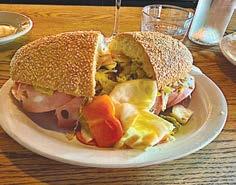
I enjoyed a lively salad of castelfranco radicchio, watermelon radish and toasted pecans, tossed with a preserved-lemon-andmiso vinaigrette and topped with shaved pecorino and a decadent dessert of saltedchocolate mousse served with whipped mascarpone, fennel cookie crumble and maraschino cherries. Sammons, who is usually working the floor, pairs it all with a tidy wine list and friendly service. Watch their Instagram @mimo_houtx for new menu items, specials, including pizzas, and Sunday feast nights.
Visit at 736 1/2 Telephone Road | mimohtx.com
A restaurant that can make summer squash sing is a restaurant you need to try. Too often eateries serve zucchini and other summer squashes as limp afterthoughts. But at The Rado Market — James Beard-finalist Chris Williams’ new farm-to-table café and market — summer squash from Williams’ nonprofit Lucille’s 1913’s farms (see full article in this issue) is the thoughtful star of the excellent Blodgett Harvest sandwich. It melds thick slices of succulent roasted zucchini with
Located in the historic Eldorado Ballroom (where musicians such as Dizzy Gillespie, James Brown and Ella Fitzgerald once played), this all-day eatery serves a host of other sandwiches including a Southern Dip with braised beef cheeks and caramelized onion, a spiced turkey melt featuring pulled berbereseasoned turkey, and grilled cheese with green gumbo. There are delectable sides such as Rado’s zesty version of Texas caviar with black eyed peas, quinoa, red onion and loads of herbs. Breakfast offerings, available on weekends, include breakfast tacos like oxtail barbacoa and egg, and sandwiches such as fried chicken breast with honey butter.
Elro Pizza and Crudo has fabulous wallpaper. It might be odd to start talking about a restaurant by discussing its décor, but Elro’s fun-yet-elegant wallpaper — which features hares leaping over flowers, doves and butterflies zipping between vines and steadfast turtles observing it all — reflects the fun-yetelegant food at this neighborhood establishment in a converted Montrose bungalow. At Elro, chef Terrence Gallivan, who is a three-time James Beard semifinalist for his cooking at The Pass & Provisions, has constructed a crisp menu of starters, crudos and pizzas that are geared toward sharing.
Kick off your meal with hearty scamorza arancini (risotto and cheese fritters served with a spicy marinara) or sourdough bruschetta. Then sample refined crudos such as refreshing snapper with pickled mango, olives and chiles or the snappy smoked kampachi with pumpkin seeds and yuzu
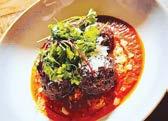
works) and lady fingers, and the soft serve ice cream with a magical chocolate shell.
Visit at 2405 Genesee St. | elrohtx.com
roasted peppers, a zesty collard green pesto, vegan ricotta and red pepper aioli into the perfect summery bite for vegetarians and omnivores.
It’s not just the good meals that make this establishment worth visiting. The Rado’s Market offers produce and products, such as hot sauces, pickles, kimchi and herb blends, from Lucille’s 1913. There are goods from other Black producers such as smoked brisket salt from B’tween Sandwich Co., local honey from Beeing Murray Honey and cold-pressed juices from Thrive Juices. Plus, you can peruse the selection of cookbooks curated by nearby bookstore Kindred Stories, which you should visit while you’re in the neighborhood. These elements and more combine to make the space a nexus for Williams’ vision of an integrated, community-building, farmto-table system as well as a model for how nonprofits, private business and government can work together to do neighbor-focused redevelopment.
Visit at 2310 Elgin St. | radomarket.com
kosho, a fermented blend of chiles and the zest and juice of yuzu. Round out your meal with one of the wood-fired pizzas. On a recent visit, we enjoyed the delightful interplay of salty cured pork and sweet slow-cooked onions on the excellent guanciale pie. There is also an Italianfocused wine list and well-balanced cocktails to pair with your dishes. And leave room for the whimsical desserts at this eatery, which is named after Gallivan’s children Eleanor and Ronan. Try the tira-miso, a play on an Italian classic that combines coffee mousse, milk chocolate, miso (trust me it
Despite Houstonians consuming millions of bánh mì, burgers and po-boys annually, there is still a lingering myth that the Bayou City isn’t a sandwich town. It’s true that in the past we had a shortage of good hoagies and creative, signature sandwiches. But as you can see from just this list, that’s no longer the case. Houston is having a sandwich renaissance. One of the establishments leading the way is LuLoo’s Day & Night, which is a collaboration between skilled pastry chef Alyssa Dole (Revival Market, Coltivare, Pinkerton’s Barbecue) and Blood Bros. BBQ’s James Beard Award-finalist Quy Hoang and brothers Terry and Robin Wong.
Located in Garden Oaks’ Stomping Grounds development, LuLoo’s is offering a range of sandwiches on a variety of breads baked on site. The fried chicken sandwich elevates a crispy fried chicken breast with generous amounts of spicy sambal mayo, creamy pimento cheese and galvanizing pickled red onion and dill slaw. My current favorite is the focaccia-letta. This playful riff on a muffuletta, the classic New Orleans sandwich created by Sicilian immigrants, pairs Doyle’s crispy-yet-airy focaccia; tart pickled banana peppers; layers of mortadella, Genoa and spicy Calabrese salamis, prosciutto and provolone with a delectable, briny olive salad that is the foundation lifting this assemblage into the culinary heights — which is just a long-winded way of saying it was d@*n good.
Besides sandwiches, LuLoo’s offers an array of Doyle’s sweet and savory baked goods such as a lovely orange and strawberry olive oil cupcake. Plus, there are appetizers, such as nachos topped with Blood Bros.’ smoked briskets, and salads like the cilantro-lime grilled halloumi salad. The shop also has a full bar offering beer, wine and creative cocktails. While you’re there, shop the selection of housemade products such as fresh-baked breads and pickles and local goods such Mama La’s Sriracha made by the people behind Houston classic Kim Son. Visit at 1223 West 34th St. | Instagram @luloosbakeshop


Chef Benchawan Jabthong Painter and her husband Graham have been busy this year. In June, Benchawan won the James Beard Award for Best Chef: Texas for the exceptional Thai food she’s making at Street to Kitchen on Houston’s East Side.


In July, she and Graham announced that they were moving that restaurant from the small space it’s occupied next to a gas station since 2020 to a new 2,800 squarefoot, 100-seat space two miles east on the same street. Oh, and in May, they opened th_prsrv, an ambitious collaboration with David Skinner, the chef/owner of eculent, which offers an avant-garde dining experience in Kemah.


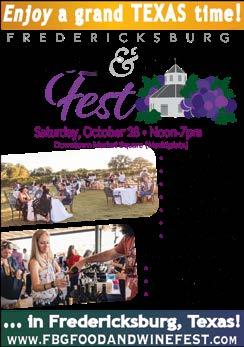
Located in Skinner’s eculent complex, th_prsrv is offering a tasting menu that explores the history of indigenous and pre-colonial foods of America and Thailand. Skinner, who is Choctaw and grew up in Oklahoma, says in a statement, “As an indigenous chef I am passionate about preserving traditional culinary
practices while incorporating modern techniques.” After meeting the Painters at a food event, Skinner was inspired by Benchawan’s commitment to traditional Thai foodways and began a deeper exploration of Choctaw cuisine. The trio also began discussing the history of the cuisines and how Thai food changed after Indigenous American ingredients such as chiles began to spread around the world. Those discussions blossomed into a brickand-mortar. After more than a year of research and development, the trio launched their first menu. Presented as a historical timeline, the multicourse meal includes Thai dishes such as saeng wa — Grilled shrimp and crispy catfish with ginger, galangal, markut lime leaves and fish sauce — and Indigenous American dishes like Mother Earth — Bison tartar, blue corn chips, ants, greens, daylily sauce and duck fat vinaigrette. th_prsrv is currently open Thursday and Friday. Reservations are required. Visit 709 Harris Ave., Kemah | thprsrv.com

If irst enjoyed James Beard-finalist Chris Williams’ progressive Southern food at the historic Eldorado Ballroom, during a celebration of Toni Tipton-Martin’s The Jemima Code: Two Centuries of African American Cookbooks. One item Tipton-Martin features in her multi-award-winning book is a red cardboard box with a pale blue lid titled Lucille’s Treasure Chest of Fine Foods — a collection of over 200 printed, well-organized recipe cards by Lucille Bishop Smith, Williams’ great-grandmother.
Smith, the namesake of Williams’ restaurant Lucille’s, was not only a successful cookbook author — her collection was reprinted five times — but also a dynamic educator and entrepreneur. Born in Crockett, Texas in 1892, she was an accomplished caterer; developed vocational culinary programs for public schools; created the Commercial Food and Technology Department at Prairie View A&M; invented Lucille’s All Purpose Hot Roll Mix, the first packaged hot roll mix sold in the United States; and much more. She also inspired Williams to become a chef and to approach his company, Lucille’s Hospitality Group, as an organization that is operating restaurants and actively making communities better.
Standing in 99-degree heat, Williams’ vision for fostering systematic improvements is coming to fruition at Bates M. Allen Park as he makes food for Kendleton, Texas’ annual Juneteenth celebration. Williams, with the help of a young boy from the community, chops and then tosses just-picked zucchini, cucumbers, sweet potatoes, onions and herbs with vinaigrette. All the produce is from farms currently operated by his nonprofit Lucille’s 1913.
Founded during the pandemic, 1913’s initial goals were to feed frontline medical workers and to provide culturally appropriate meals to the elderly in under-resourced communities such as Sunnyside, a historic African American neighborhood on Houston’s southside.
As the organization neared one million meals distributed, it began to evolve. “The meal program had served its purpose perfectly,” says Williams. “We needed to protect our elders, keep them out of grocery stores. It did that. It ran its course. So, we pivoted to empowering people, taking care of people who need access to food and jobs. I want us to have a deeper impact if we are going to invest all this time and money.”
To achieve this goal, Williams and his team are developing an ecosystem of neighborhood-focused farms, production kitchens and retail outlets that will increase access to food and provide jobs in underserved communities. “The whole point of the project is to provide access to fresh foods but also to employ people from the community and to give back the gift of farming and self-sustainability,” says Williams.
“It starts with the farming,” he adds. Currently, Lucille’s 1913 has two main farms. One is raised beds behind the Power Center, a business incubator and event space in Southwest Houston that is being revitalized by The Community Collective for Houston, another nonprofit co-founded by Williams. The other is 10 acres, three currently in production, at Bates M. Allen Park in historic Kendleton.
The town, which is southwest of Houston in Fort Bend County, was founded by emancipated slaves after the Civil War. “My family was part of the founding fathers of this community,” says Williams. “At one point it was a farming Mecca.”
However, Kendleton’s Black residents, like the nation’s, lost farmers and access to farmland. According to the UDSA, in 1920, there were approximately 950,000 African American farmers; today there are 45,508, representing only 1.3 percent of the farmers in the United States. That reduction has been accompanied by a loss of $326 billion in African American farm acreage according to a study published by the American Economic Association. The causes range from the growth of large-scale corporate agriculture to systematic discrimination by the USDA and banks that blocked Black farmers' access to loans and other programs. For Kendleton’s residents, this translates into driving at least 15 miles to find fresh food.
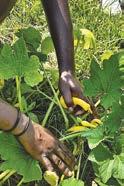
To help solve this problem, Fort Bend officials reached out to Lucille’s 1913 about partnering with them on a meal program. The county had limited funding options, but it did have land. Williams and county officials identified 54 acres that were available and suitable for farming and decided to kick off the partnership with 10 acres in Kendleton.
To turn those acres into productive farmland, Williams hired Jeremy Peaches as the nonprofit’s horticultural director. Peaches, who comes from a long line of farmers, was born in rural Mississippi, where his grandmother and many of his neighbors had gardens and farms. He moved to Houston when he was six and grew up in Sunnyside. After earning a Bachelor of Science in Agriculture/Animal Science from Prairie View A&M, he returned to Houston and founded Fresh Life Organics, a farm and agriculture consulting company. In addition, he and Ivy Walls co-founded Caribbean-inspired farm-to-table restaurant Kuji Kitchen and Fresh Houwse Grocery, which is providing local produce and products to Sunnyside.
Peaches has been tasked with growing food appropriate for the communities the nonprofit serves and for restaurants like Lucille’s and Williams’s new restaurant Late August, while hiring and training members of the community to farm. “We want people to work with Jeremy and to learn how to activate the land and get the benefit of getting decent pay,” says Williams, who thinks that systematic change in our inequitable food system requires creating good-paying jobs. Williams also thinks it requires, as he says, “growing for people’s palate.” He’s learned from observing other organizations and from his own experience that an approach that doesn’t consider a community’s culture and cuisine and just provides a random selection of food often dehumanizes the recipients and leads to waste. During the pandemic, Lucille’s 1913 prepared 500 food boxes to be distributed at Cuney Homes. Williams selected produce based solely on prices. He learned later that much of the produce went unused because it wasn’t what people knew how to prepare or were used to eating. “If I have to provide a recipe to use these ingredients, then I’m using the wrong ingredients. We want to grow familiar ingredients: squash, collard greens, tomatoes, okra,” says Williams.
For Peaches that means developing a focused yet sustainable growing program. “We started employing different methods like intercropping, which is something generations in my family have been doing,” says Peaches. This approach involves maximizing resources by growing plants that benefit each other. As Peaches explains it, “If I’m growing okra and corn — crops that grow high — the hotter it gets, my squash, which grows low, will be shaded, prolonging its growing season.” Peaches is also minimizing tilling, using dripline irrigation to maximize water absorption and converting farm waste into fertilizer.
Eliminating waste is another key component of the team’s vision of a fully integrated farm-to-table food system. According to the nonprofit ReFED, the U.S. produced 91 million tons of food waste in 2021, which is 38 percent of all production, enough food to make an estimated 149 billion meals a year.

In addition to composting, Lucille’s 1913 is combating food waste by developing, at its fermentation lab, products such as pickles, hot sauces, kimchi and zingy dried onion and herb blends. These products can then be provided at low costs to under-resourced communities or sold at retail outlets to generate revenue for the nonprofit.
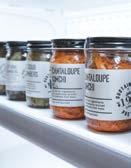
One of those outlets is The Rado Market, Williams’ new café and market, which features produce and products from Lucille’s 1913 and other Black producers and is on the first floor of the recently renovated Eldorado Ballroom (see Notable Edibles for more).
The Eldorado, built in 1939, was a cultural hub for Black Houstonians hosting artists such as Ella Fitzgerald and Etta James. Lucille’s Hospitality Group has partnered, as managing operator, with its owner Project Row House, a Third Ward arts nonprofit, to once again make that corner of Elgin and Emancipation a thriving cultural and economic center and guide the area’s inevitable gentrification in a direction that benefits the current residents — which is an often overlooked aspect of creating a sustainable, community-focused farmto-table system.
Like any organization, Lucille’s 1913 continues to evolve and adapt. “Last year we spent deep diving and beta testing, making mistakes. Now, we’re ready to hit the ground running,” says Peaches.
Williams and his team are already expanding their model by partnering with Cheniere Energy to rejuvenate several small parks by building community gardens that will be staffed not by volunteers but by paid employees who live in the neighborhood. When Fort Bend County completes a planned community center at Bates M. Allen Park, the goal is to include a production kitchen where produce from the Kendleton farm can be transformed into products or processed and frozen, so it can be available at low cost to the community yearround while providing jobs in the area. It will be one more step toward ensuring Lucille’s 1913 grows, feeds and employs, while being self-sustaining.
“This organization will be a true testament to how nonprofits, private entities and government can work together to do something for the community, create jobs, change the tide,” says Peaches.
Learn more at lucilles1913.org





Ma ny people visit Wimberley to leisurely shop the boutiques, taste local wines, or enjoy the area’s natural beauty, particularly Cypress Creek and the Blanco River. They may not know, however, that this “little piece of heaven” is also a hub for the arts. Over the years, Wimberley has attracted creatives like an artistic magnet. Musicians such as Slaid Cleaves, Ray Wylie Hubbard, Edie Brickell and Paul Simon have joined four-time Grammy winner Sarah Jarosz, an area native, in calling the town home. World-renowned painters and sculptors make their creations in their Wimberley studios and writers flourish here. From visual art to music to the famous boots all over town, the possibilities are endless for a visitor craving a taste of the creative life.
Let’s start with the giant 6-foot-tall painted boots you see all over town. In 2014, the Wimberley Valley Arts and Cultural Alliance launched the Bootiful project to celebrate the arts. Initially 32 boots, each uniquely designed and painted, were installed at the locations of local sponsors. Because of their popularity, there are now over 50 boots, and the project will be capped at 60. If you want to visit them all, you can find a map at bootifulwimberley.com or grab a printed version at the Visitor’s Center in town.
Wimberley is home to nine art galleries, seven of which are within walking distance from one another, right in the town’s main square. You can just feel the artsy vibes flowing through as you mosey


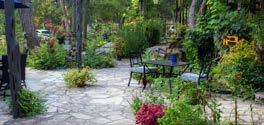

around — and you can find everything from glass art at Wimberley Glassworks and Silo Gallery & Glass Studio, to collectibles, fine art, installation pieces at Art on 12 and photography. What’s more, many other shops proudly display and sell the work of local artists such as the beautifully designed Casa V Wine on RR12 on your way into town from Austin. Two of the newer galleries to town are Wild Life: Rodney Bursiel Gallery and 220 Fine Art Gallery, which is located in the Texas Historic Landmark property The Danforth/Kerbow House, and is owned and curated by Suzanne Oliver. Representing premier artists from central Texas, the gallery offers a unique collection of emerging talent from across mediums and styles. Viewing in this gallery is fun and free, and Oliver will often have a lovely bottle of wine open for visitors to enjoy while perusing the art. According to Oliver, the mission of her gallery is to “represent some of the finest talents in Wimberley, and also to introduce Wimberley to artists from other parts of the region.”
This fall, 220 will host monthly receptions, informative talks and artist demonstrations from 4–7 p.m. Visit 220gallery.


At Wild Life, across RR12 from Ranch Brand Wine & Spirits — a delightful bistro and tasting room — you’ll find the work of Rodney Bursiel, an amazingly talented photographer of all things wild from sharks and whales to leopards and elephants … and musicians such as Billy Gibbons, Willie Nelson and Ryan Bingham. The gallery features four rooms, each with their own theme: horses, Africa, music and underwater creatures.

These stunning photographs reflect Bursiel’s adventurous spirit and extensive travel. He’s been to France five times to photograph the wild horses of Camargue and has traveled all over the (sea)world to photograph sharks, orcas, great whites, rays and whatever else he comes face-to-face with down below. He’s traveled to Kenya, Tanzania, Ethiopia, Rwanda and Uganda, and will soon travel to Africa again to add Morocco to the list. When he first ventured to Africa, he was there to see the elephants but he fell in love with it all — lions, giraffes and especially rhinos. After learning about the near-extinction northern white rhinos, he was inspired to become involved in conservation efforts to save the species. Back home, he held a fundraiser, and the money was donated to Ol Pejeta Conservancy. Those funds also made it possible to adopt a baby southern white rhino, now named Wimberley. Proceeds from the gallery’s merchandise go back to Ol Pejeta to help with their conservation and research efforts.


When he’s not traveling the world, you can find Bursiel at the gallery Thursdays through Sundays or in Austin photographing the local latenight music scene. The “red room,” or music room at Wild Life is a cool addition to all the animals and international trinkets, and is fitting for this musical town. In 2022, Wimberley was certified as a Texas Music Friendly Community.
“Our community is exceptional in the quality of musicians who live here, the well-known names who play here and the number and variety of great music venues here,” says Deirdre Taylor, past president of the


Wimberley Valley Arts and Cultural Alliance. Wimberley is home to the world-class Blue Rock Artist Ranch and Studio as well as other excellent independent production facilities. On any given weekend, you can find live music playing all over town, and Wimberley is also host to a number of annual concert series. The Stars Over Wimberley Benefit Concert Series, for example, is a collaboration between WVACA and the Wimberley Players, the local live theater group. The series showcases Texas musical artists, “shining stars,” and supports the Robert Moreman Memorial Scholarships for creative Wimberley graduating high school seniors. Recent performers include Ruthie Foster, Alejandro Escovedo and Slaid Cleaves, and Sarah Jarosz will be playing on November 22. You can get your tickets (which sell out fast!) online at starsoverwimberley.org.
Finally, Wimberley has also been certified as a Texas Film Friendly community (and happens to be where some episodes of The Walking Dead were filmed). As mentioned earlier, writers of all types thrive there. And the town annually hosts the Wimberley StoryFest, featuring the stories, songs, culture, history and cuisine of the Wimberley Valley. This year, the StoryFest will be held October 12–14. You can learn more at wimberleystoryfest.org.
So if you’re thirsting for culture in addition to, or instead of, a little wine, Wimberley is sure to satisfy!





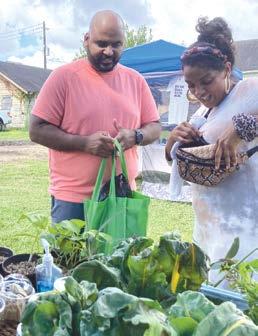
 WORDS BY ARIES PAYNE | PHOTOS BY FREEDMEN'S TOWN FARMERS MARKET
WORDS BY ARIES PAYNE | PHOTOS BY FREEDMEN'S TOWN FARMERS MARKET
Since its launch in 2020, the Freedmen’s Town Farmers Market has become a pillar of its community, having a significant impact on preserving the neighborhood’s history and culture and improving food security — despite gentrification and a global pandemic.

Houston’s Fourth Ward, which is just west of downtown, is home to Freedmen’s Town, one of many African American communities formed post-Civil War by the formerly enslaved. Because of segregation, early Black residents of Freedmen’s Town had to develop the area on their own. It was a remarkable feat. They built homes, churches, schools, grocery stores, restaurants and hospitals, and even built the roads with handmade bricks — many of which still pave those streets. Founded in 1865, it’s considered Houston’s oldest Black neighborhood. Despite the past growth and success of Freedmen’s Town, it has become more isolated today as development has resulted in its gentrification. Stand in the middle of the historic brick roads running between the shotgun -style row houses, and you’ll see Downtown’s skyscrapers overlooking the community. Around the edges and even within pockets of the neighborhood, there are large plots reserved for new apartments and condos.
Although gentrification can result in positive outcomes — such as increased economic opportunity — we can’t ignore the adverse consequences: the displacement of a community’s culture, small businesses and low-income families as well as limiting access to affordable and healthy food.
Freedmen’s Town may be considered a short car ride from downtown Houston. However, it’s worlds away for residents without reliable transportation or the means to pay for public transit or a ride-sharing service. The closest grocery stores are a Kroger in River Oaks and a Randall's downtown; both require a 20 to 30-minute walk. Once you arrive, you can only purchase as much as you can carry home. It’s no surprise that the community has become the center of one of Houston’s food deserts.
Sade Perkins, a former resident of Fourth Ward, realized this was a problem when she had to make the trek for groceries after her car broke down. But to solve this, the neighborhood faced a conundrum: How
do you increase access to affordable fresh food without succumbing to gentrification and risking the loss of the area’s cultural identity?
For Perkins, the answer was clear: the community needed a farmers market — and she would lead the efforts to establish one. It would have multiple benefits, offering fresh, accessible food while also supporting local BIPOC-owned businesses and entrepreneurs.
When Perkins finally launched the Freedmen’s Town Farmers market in November 2020, no one anticipated that the outdoor grand opening would come with significant rainfall. No one could predict that a global pandemic, which resulted in food shortages in many communities, would threaten to shut down the market just as it was getting started. And with gentrification inching closer each day, no one knew what this would mean for a new enterprise intended to protect the people, history and spirit of Freedmen’s Town.
However, Perkins’ market remained resolute and even thrived in these conditions. Congressman Al Green visited and presented Perkins with a Certificate of Congressional Recognition during the grand opening (this accolade honors achievements of public distinction). Other local businesses and important figures have also shown their support over the years including Saint Arnold Brewing Company and Houston City Council Member Abbie Kamin. The market has also garnered media attention. Bravo’s Top Chef brought season 19 contestants to Houston, allowing them to explore the history of Freedmen’s Town, browse the market’s offerings and create dishes for a community fundraiser. It remained outdoors during COVID-19, so visitors could safely shop and access fresh, healthy food despite the shortages.
Although gentrification has become more of a reality, the Freedmen’s Town Farmers Market has brought the community closer together and has already generated enough economic activity ($250,000 in 2021) to rival that which would have come from urban development. Perkins notes that the market has aided the launch of several independent businesses, and she hopes that the market can continue to help vendors thrive in their own storefronts. “I love to see my vendors move on to bigger and better things … but also keep us in their hearts!” she says.
Perkins has also ensured the market is accessible for as many customers as possible by accepting food stamps and becoming both EBT- and SNAP-certified. Perkins aims to continue educating the public about these and other low-income options for acquiring essential nutritional goods.
Unfortunately, the market continues to combat the consequences of development. “The City [has] eminent domained the lot that I was using,” says Perkins. It’s currently being employed to store equipment that’s being used to build high-rise apartments on Allen Parkway. Although the landowner, Mt. Horeb Missionary Baptist Church, is being compensated by the city for the lot’s use, Perkins is left without a space for the market and has had to temporarily close — leaving her vendors and community residents without an economic outlet or reliable food access once again.
Despite this setback, the vision that Perkins’ imagined for the market has remained vibrant and she remains hopeful the market will reopen, giving the community the opportunity to once again shop for fresh produce, and be able to enjoy live performances from African drummers and walking tours of the neighborhood led by the Houston Freedmen’s Town Conservancy.
According to Perkins, the market has quickly become part of Freedman’s Town’s soul and legacy, leveraging self-sufficiency and demonstrating entrepreneurship and creativity — attributes that make up the soul of Freedmen’s Town. “We’re part of the legacy now,” Perkins proudly states. And if the neighborhood can leverage these traits to stay strong in light of past and present challenges, why can’t the market?
In true Freedmen’s Town spirit, Perkins had been the sole organizer of the market since its inception. While it’s closed, she is using the time to obtain nonprofit status. This would allow her to seek out additional funding and hire a team dedicated to the organization's success. She also hopes to achieve more city and community support — a collaborative effort that would allow the market and community to thrive. “We have a lot of community support, but without both the city and community, it’s impossible for a market like this to exist.” Perkins says.
If you would like to offer support for Freedmen’s Town Farmers Market, contact Perkins on Instagram @freedmenstownfarmersmarket, facebook.com/FreedmensTownFarmersMarket or via email at freedmanstownfarmersmarket@gmail.com. You can also follow the market on social media for the latest updates.
Previous Page: Plant it Forward booth at Freedmen’s Town Farmers Market
This Page, Top Left: Plant vendor at Freedmen’s Town Farmers Market
Top Right: Family shopping at Freedmen’s Town Farmers Market
Bottom Right: Drummers at Freedmen’s Town Farmers Market
Aries Payne is a long-time writer and editor based in Houston, TX. With an extensive writing, editing, and marketing background, Aries is dedicated to using her knowledge to help people and organizations grow and reach their full potential through the written word.

Fall is all about colors, all the reds, purples, and greens you can think of!
Reds and purples in roselle (hibiscus calyx), prickly pears, fall tomatoes, pomegranates
Orange hues in winter squash such as butternut, spaghetti and cushaw but also in sweet fruits like persimmon
Beautiful shades of green in chards, mustards, kales, spinach and sweet potato greens
Year round mushrooms!
Oysters, shitake, lion's mane pippino and many more
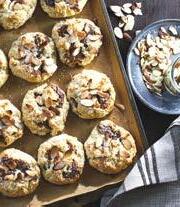

Recipe and photos by Pauline Stevens
2 ½ c. flour
½ c. sugar
1 T. baking powder

1 ¼ stick unsalted butter, sliced
1 c. buttermilk
Nutella
Course sugar crystals
Sliced almonds
Preheat oven to 350 degrees. Prepare a baking sheet with parchment paper. Mix the flour, sugar and baking powder in a large bowl. Add butter and mix with a fork without overdoing it. It must stay crumbly and dry. Incorporate buttermilk until the mixture stays together. With your hands, make 2-inch balls of batter. Flatten balls in the center. Add 1/2 T. nutella (or more if you like them sweeter). Close balls, and don’t worry if they stay uneven. Decorate with sliced almonds and sugar crystals. Bake 15-20 minutes or until golden brown.
For more information on farmers markets, seasonal recipes and what’s in season, visit ediblehouston.com
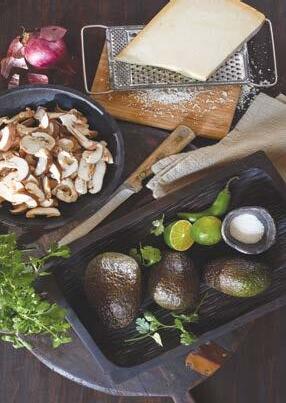

Recipe and photos by Pauline Stevens Serves 4
1 jalapeño pepper, chopped with seeds removed
¼ small red onion, chopped 1 c. of your favorite fresh mushrooms
1 T. olive oil
Salt and pepper
1 large avocado
Cilantro
Parmesan cheese
PREPARATION
Sauté peppers, onion and mushrooms in olive oil. Add salt and pepper to taste. Cut avocado in half and place on a plate. Leave it unpeeled to keep it in place. Top the avocado with mushrooms. Add cilantro and parmesan cheese to taste.
Beside her passion for photography, Pauline Stevens enjoys traveling and baking. She also visits every possible farmers market, even between frequent visits to NYC where her quadruplet sons live. Follow her store on IG @redbirdshouse.
Let's go beyond bright orange pumpkins this fall and bring home a barrel of beautiful butternut squash. Not just to adorn your front stoop or to make cute ghosts for Halloween by painting them white and drawing on eyes, but also to add to the fruit bowl on your kitchen countertop — and mainly, to savor its sweet flavor when cooked Indian style. The funny thing about this is that butternut squash is not typically found in India or in Indian cuisine. It is a fairly modern variety of winter squash developed in the United States in 1944. Even though squash has had significant prominence in the cuisines and cultures of Native Americans for hundreds of years, butternut squash was not amongst their annual crops. Legend has it this cultivar was developed by Charles Legget, a gentleman from Massachusetts, by crossing gooseneck squashes with other varieties. Legget named this new strain "butternut squash" since he said it was "smooth as butter and sweet as a nut."
So how did Indian style become one of the most delicious and easiest ways to enjoy butternut squash? Growing up, my mom would make a traditional savory Indian dish called petha from an Indian pumpkin
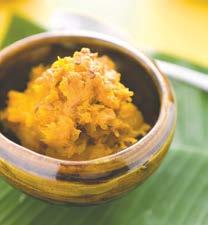
that is similar to calabaza (a winter squash we commonly find here that is also known as West Indian pumpkin). My mom usually buys Indian pumpkin at local Indian grocery stores, where it is often cut in half or quartered so you can see the beautiful bright orange flesh. When I was writing my second cookbook, which highlights Indian fruit and vegetable recipes, I wanted to include some produce commonly found here that would be enjoyable when cooked Indian style. So, I asked my mom how to cook butternut squash Indian style. She suggested we make it like she cooks Indian pumpkin. We tried it out. I vividly remember the sweet and spicy burst of flavor enhanced by tempered cumin seeds. I immediately knew this dish was a winner, and I liked it more than the Indian squash my mom makes because of the sweet notes. I named my dish "Sweet and Spicy Butternut Squash Mash." It has become one of the most popular recipes in my book Healthy Indian Vegetarian Cooking. I haven’t found one person, ranging from babies to adults, that has not liked this recipe, and I am confident this will be the new way you’ll enjoy winter squash this season!
Butternut squash, which can be found at area grocery stores and farmers markets, have thick necks with a rounded bottom. They are smooth on the outside with a cream-colored exterior. Look for firm ones with matte rather than glossy skin, which

indicate the squash was picked too early and will not be sweet. These squashes keep for over a month at room temperature in your pantry or fruit bowl. Now that you’ve selected your squash, the most arduous step in this recipe is peeling and chopping it — the rest is a breeze. You can peel it with a regular vegetable peeler, though I have a wider, sharper bladed peeler specifically for butternut squash that glides the skin right off with hardly any effort. (Or you may prefer to buy it already peeled and chopped at your grocery store.)
Once it’s been chopped, this beautifully firm, orange winter squash cooks into a delicious, healthy and flavorful mash. Just cook it in a pan on your stovetop with olive oil and a few spices, cumin seeds being the star. Serve as a yummy side dish, or stuff it between American dinner rolls to create a tasty squash slider no one will say no to. This holiday season, swap out the sweet potato casserole with my unique Indian squash dish, and everyone will be extra thankful!
Before I leave you with my recipe, let's give a moment to some other common winter squashes, including the ubiquitous orange pumpkin. Winter squashes naturally mature in autumn and have a hard shell or tough skin that is usually cut or peeled off. The squash can also be cut in half or baked full, and the flesh can then be scooped out of the tough exterior. This year, instead of using canned pumpkin purée to make my family's favorite pumpkin bread, I am going to try baking a whole pumpkin in my oven and then scooping out the soft flesh to make the bread. I’ll mix nuts and dark chocolate chips into the batter and enjoy this scrumptious treat as a snack with morning coffee or afternoon tea.
Acorn squash is another cute winter squash that can be enjoyed savory or sweet. It is quite easy to bake right in your toaster oven. Slice it down lengthwise, scoop out the seeds, lay it on foil and drizzle with olive oil, roasted ground cumin, salt and
black pepper, or, for a sweet version, with honey, brown sugar and cinnamon. Bake at 400 degrees for about 60 minutes or until tender.
Spaghetti squash is another winter squash that has firm flesh when raw, but when cooked the flesh turns into strands and can be served as a healthy substitute for spaghetti or other pasta.
Calabaza is very similar to the traditional Indian squash that inspired me to make this butternut squash recipe. It can be cooked the same way as I make my butternut squash mash.

A TWIST AND THE RECIPE
Now back to butternut squash! Recently, I was going to a potluck and was assigned an appetizer. I created a new dish with my butternut squash mash. I mixed the cooked mash with goat cheese, folded it into wontons and deep fried them. The wontons disappeared in seconds as friends gobbled them up as soon as I set them out. The spice of tempered cumin seeds and cayenne, mixed with the natural sweetness of the butternut squash, blended with the sharp tanginess of goat cheese, all enveloped in a crisp, deep fried wonton wrapper was a perfect medley of tastes and textures. Think crab puffs, but a vegetarian version with a burst of flavor.
Let's make the Indian-style butternut mash. I have even made a 30-second video that shows you how to make it from start to finish. You can find the recipe and video on my blog at spicegirlkitchen.com.
Following recipe courtesy of Shubhra Ramineni from her cookbook, Healthy Indian Vegetarian Cooking, Easy Recipes for the Hurry Home Cook

Serves 3 to 4
Prep time: 10 minutes
Cook time: 25 minutes
Refrigerator Life: 3 days
Freezer Life: 1 month
Reheating Method: Place the refrigerated or defrosted butternut squash in a microwave, cover and stir periodically. Or place it in a saucepan over medium-low heat and stir periodically.
1 butternut squash (about 1½ lbs/ 700 g)
4 T. vegetable oil
½ t. cumin seeds
¼ t. ground turmeric
¼ t. ground red pepper (cayenne)
½ t. salt
¼ t. ground black pepper
PREPARATION
Wash and peel the butternut squash with a vegetable peeler or knife. The peel is tough, so you may have to use a bit of force to peel it until you see the orange-yellow flesh. Cut off both ends and discard. Cut the squash in half lengthwise. Using a spoon, scoop out any seeds and strings and discard. Chop the squash into about 1-inch (2.5 cm) pieces. Pour the oil into a medium saucepan and place over medium heat. When the oil is heated, add the cumin seeds and let brown, about 10 seconds. Do not let the cumin seeds burn and turn black.
Shubhra Ramineni, is a first-generation Indian American raised in Houston, TX. She is the author of two award-winning Indian cookbooks Entice with Spice, Easy and Quick Indian Recipes for Beginners, and Healthy Indian Vegetarian Cooking
Immediately add the chopped squash, turmeric, red pepper, salt and black pepper. Stir to combine. Reduce the heat to medium-low and cover the saucepan. Cook until the squash becomes completely soft and mashed, stirring occasionally and mashing the squash with a large spoon, about 25 minutes. Enjoy now or let cool to room temperature and refrigerate or freeze for later.
Sw irling a glass of Mourvèdre, deep red with a tinge of indigo, emboldens aromas of violet, dark fruit and pepper. Complex and layered, a sip of this medium-bodied wine holds notes of berries and iron and piques the imagination. Pronounced “more-VEDD,” with almost no one articulating it precisely the same way, this gorgeous and dynamic varietal stands out here in Texas.
Some local winemakers call it “the soldier grape,” others are calling it the “Pinot of Texas.” What if Mourvèdre could stand on its own as the Mourvèdre of Texas?
I spoke with several Texas vintners as they prepared for harvest who emphasized this grape’s resilience to Texas’ weather extremes, its versatility in expressions, its pairings with the foods Texans love — especially barbeque — and its impressive ability to capture Texas’ unique terroir. Mourvèdre seems to be on track to become one of our state’s most reliable varietals, increasingly entwined with Texas’ identity in the wine market.
Mourvèdre is thought to be an ancient varietal, with roots in Valencia, Spain, where it is called “Monastrell” and could be found as long ago as 500 B.C.E. By at least the 16th century, it could be found in the Roussillon, Provence and Rhône regions of France where it became widely used in Grenache-Syrah-Mourvèdre (GMS) blends like Côtes du Rhône or Châteauneuf-du-Pape. The grape eventually made its way to Australia, where it’s called “Mataro,” to California in the 1860s and is now grown across the Texas Hill Country and High Plains.
Texas vineyards have been growing Mourvèdre since the early 2000s.
Chris Brundrett, co-founder and winemaker at William Chris Vineyards in Hye, was one of the early champions of the grape. “I had really fallen in love with some of the wines I was drinking from Spain and the southern part of France. I had done all of the research and was like, ‘This grape could be great for Texas, so I was kind of on this mission to get some of it planted in Texas. There were maybe two blocks in the state before then, but I wasn’t aware of them at the time.” Around 2006, Brundrett started conversations with Lost Draw Vineyard owner and operator Andy Timmons, who he considers a mentor. When Brundrett and Bill Blackmon established William Chris Vineyards in 2008, they planted their first block of Mourvèdre at Lost Draw. After the vines started producing fruit, the winery released the first Mourvèdre under the William Chris label in 2010.
“We call it the ‘soldier grape,’ because Mourvèdre… grows straight up,” says Brundrett. “And even in some of our most challenging years, Mourvèdre just loved the heat and it did fine through the freezes.”
Brundrett pinpoints several benefits to a varietal that is resilient to Texas weather. “Our goal is to grow and produce sustainably, and Mourvèdre helps achieve that goal,” says Brundrett. “It’s important to grow and make things that want to be here.” A bedrock of William Chris’s philosophy is a commitment to sustainable and regenerative practices.
“The fruit quality is just incredible,” says Brundrett. He appreciates the varietal for its consistent quality, which he views as a key aspect of sustainability. “Sustainability is seeing great quality year-in and year-out or nine out of ten
years and being able to produce a high quality wine that is delicious and soulful and that people want to enjoy,” he says. What gives Mourvèdre an edge in Texas?
According to Brundrett, our state’s size can be an advantage.
“Texas is a huge state … It can be seen as a blessing and a curse, but I see it as more of a blessing. It creates a lot of opportunity for us to experiment with different varieties and learn about different varieties in different regions.”
He is enthusiastic about the community of wine producers in the Hill Country and hopes that more and more people will try Mourvèdre and come to enjoy it as much as he does. “I want to encourage your readers to look at some of the best producers and start there, and then not be afraid to wander off the beaten path and try some of the younger producers because so many of our neighbors are doing such a great job,” he says.
William Chris now produces Mourvèdre at its Hill Country Estate, at Lost Draw vineyards in the High Plains, and at other Texas vineyards. It offers at least six different Mourvèdres, available at the winery and online. Brundrett also travels to international wine conferences, choosing to pour Mourvèdre as a representation of Texas wine. “Very few places in the world can grow Mourvèdre like Texas grows Mourvèdre,” he states.
Salt Lick Cellars in Driftwood is another Texas vineyard that has deeply invested in Mourvèdre. It accounts for approximately a quarter of its 50-acre vineyard. Garrett Strickler, vineyard manager, has a background in horticulture and farming and has been with Salt Lick for eight years helping its vines to thrive. He shares Brundrett’s enthusiasm for the varietal, “I have a personal affinity bordering on the evangelical for Mourvèdre.” Strickler explains, “Mourvèdre is reliable. From a vineyard perspective, it’s so easy to manage compared to the other varieties. It’s late-budding so it misses most of the freeze damage and it really benefits from and enjoys our hotter climate. Some of these varieties might be described as ‘tolerating’ our drought, whereas Mourvèdre seems to thrive in it.”
Switching from vineyard manager to avid Texas-wine drinker, he adds, “It’s really rare to come across a winery or a tasting room where they say, ‘Yeah, you know our Mourvèdre is OK but it’s not really my favorite.’” Strickler shares that when he’s come across Mourvèdre in Texas tasting rooms, whether it is a rosé, a fruit-forward High Plains expression or a bold, oak-aged Hill Country expression, he feels it’s been consistently high quality. “I think it would be beneficial for us as a region to embrace a variety like Mourvèdre that is telling us over and over, ‘You can trust me,’” Strickler encourages, “Every year is a Mourvèdre year.”
While Salt Lick Cellars cares for extensive vineyards, it does not make wine onsite. It partners with neighboring Driftwood winemakers like Duchman Family Winery and Fall Creek Vineyards, and others, to produce the wines for Salt Lick Cellars. Those wines can be enjoyed at the Salt Lick Cellars tasting room, which is tucked under a shady oak grove next to the infamous barbeque restaurant.
Mourvèdre has traditionally been known as a great blending grape, and Salt Lick first planted the varietal for that purpose. Though it makes a GSM that features its Mourvèdre, Stickler says it stands out “as a single varietal.”
The 2018 Salt Lick Cellars Mourvèdre I tasted was a knock-out. It was both earthy and mouth-wateringly jammy with a hint of oak and a layered, lasting finish. “It’s a best-selling wine for us and 100 percent from our site,” Strickler tells me.
At Salt Lick Cellars, the wine showcases the vineyard’s limestone and nutrient-rich alluvial soil, a benefit being in the Onion Creek floodplain.
Another thing that makes this varietal a go-to for Strickler is its “broad spectrum of expression.” It can be used to make wines ranging from a light rosé to an elegant blend to a big, bold red. Stickler says more than 12 winemakers source their Mourvèdre fruit from Salt Lick’s vineyards, and that he enjoys all of the distinctive expressions that originated from the site.
Partnerships are a characteristic of the Texas Hill Country wine community.
One of the winemakers who sources Mourvèdre from the Salt Lick is Joshua Fritsche, owner/winemaker at Tatum Cellars. Fritsche started Tatum Cellars in 2012, the year his daughter, Tatum Rose, was born. He began making Provence-style rosé wines while working at William Chris, where he would sell it upon request without a tasting room or online presence.
As he built a cult following and expanded his wine portfolio, he opened a tasting room in the Johnson City town square this year.
Fritsche ages his Mourvèdre sur lie (This translates to “on the lees.” Lees are leftover yeast particles created by the fermentation process, which can add unique textures to the wine) in neutral oak barrels for 18–22 months. When you sip his wine, its reminiscent of Old World styles — earthy with notes of ripe plum, red meat and chalky herbs.
He’s more than a fan of Rhône varieties, and appreciates Mourvèdre’s resilience and versatility. “My experience with Mourvèdre from all across the state showed me that the grape does really well here,” says Fritsche. “It's late budding and cold hardy so it misses the late spring freezes. It just makes sense from a grower standpoint. It's very happy here.”
He sees a promising future for Mourvèdre in Texas. “This is a large state with vineyards spread all over and we're just starting to really focus on what varieties make sense in specific areas. Mourvèdre has proven itself to grow well pretty much anywhere here.”
In Houston, Decant Urban Winery is introducing its customers to Mourvèdre. In 2017, Winemaker Kristina Olivarez Tucker and her husband co-founded this city-based winery that produces wines in a warehouse using low-intervention techniques. They source their Mourvèdre from the Texas High Plains and age it in neutral French oak barrels to maximize the expression of the fruit and the vineyard. “Our Mourvèdre is lighter and brighter. It looks like cranberry juice in the glass,” says Olivarez Tucker. “You get the characteristic smoky, gamey/meatiness, and then a lot of tart raspberry, orange, and spice.”
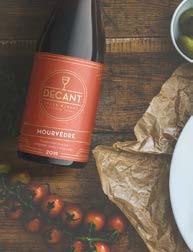
She prefers to serve it chilled and with barbeque. “When it’s 105° and you want a red, it’s perfect,” she shares. “It goes really well with brisket, ribs and fajitas, and it’s high acid so it helps cut through any fat.”
What influenced Olivarez Tucker’s decision to make and serve Mourvèdre? “Well, it probably goes without saying but we try to make wines and varietals we like!”
Brundrett, Strickler, Fritsche and Olivarez Tucker all share a personal passion for the varietal. It’s a wine they love to drink themselves and that pairs well with the Texas foods they love, from barbacoa tacos to barbeque. Mourvèdre and Texas seem destined for each other.
If you haven’t yet ventured out for a glass of Texas Mourvèdre, there’s no better time to try it. And, if you’ve had it before, the range of expressions in the wine found at different Texas wineries leaves room for discovery and adventure. Mourvèdre’s medium-bodied complexity makes it enjoyable for porch-sipping throughout the fall. Be sure to ask for it in tasting rooms during Texas Wine Month this October and pick up a bottle to pair with your Thanksgiving dinner. Your friends and family will thank you!
Stacey Ingram Kaleh is a native Texan and writer and editor for Edible publications When she’s not eating at local restaurants and drinking Texas wine, she’s spending time outdoors in the Hill Country with her husband and two young daughters and soaking up as much live music and art as possible.
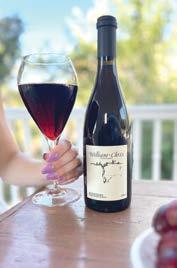

Ab Astris
320 Klein Road Stonewall, TX 78671 abastriswinery.com
@abastriswinery
Augusta Vin 140 Augusta Vin Ln. Fredericksburg, TX 78624 augustavin.com
@augustavinwinery
Decant Urban Winery 948 Wakefield Dr. Houston, TX 77018 decantwinery.com
@decantwinery
Fall Creek Vineyards 1820 County Rd. 222 Tow, TX 78627 and 18059 FM 1826 Driftwood, TX 78619 Fcv.com
@fallcreekvineyards
French Connection Wines 1197 Hye-Albert Rd. Hye, TX 78635 frenchconnectionhye.com
@frenchconnectionwines
Hilmy Cellars 12346 E. US Hwy 290 Fredericksburg, TX 78624 hilmywine.com @hilmywine
Kuhlman Cellars 18421 E. US Hwy 290 Stonewall, TX 78671 visit.kuhlmancellars.com
@kuhlmancellars
Messina Hof Bryan Estate Winery 4545 Old Reliance Rd. Bryan, TX 77808
Harvest Green 8921 Harlem Rd. Richmond, TX 77406
Hill Country 9996 US Hwy. 290 Fredericksburg, TX 78624 messinahof.com
@messina_hof
Nice Winery 1220 Lumpkin Rd. Houston, TX 77043 nicewines.com
Pedernales Cellars 2916 Upper Albert Road Stonewall, TX 78671 pedernalescellars.com @pedernalescellars
Perissos Vineyard and Winery 7214 Park Rd. 4 W. Burnet, TX 78611 perissosvineyards.org
@officialperissosvineyards
Salt Lick Cellars & Wine Garden 18300 FM 1826 Driftwood, TX 78619 saltlickcellars.com
@saltlickcellars
The Burg Wine Company Fredericksburg, TX theburg.wine
@theburgwineco
William Chris Vineyards 10352 US Hwy 290 Hye, TX 78635 williamchriswines.com
@williamchrisvineyards

Over the last decade or so, more and more Texans are going wild about bees and honey, and for good reason. It’s easy to quickly become fascinated by these creatures, their role in our ecosystem and, of course, the delicious and nutritious honey they provide.
There are about 20,000 different species of bees on the planet, with about 1,000 native to Texas. Bees are integral to our global ecosystem, pollinating fruits, crops, flowers and vegetables — in fact, about onethird of the food we eat. But the bee population has declined over the years due to climate change, pesticides and parasites, making it necessary for us to consciously support the bee population. One way to do that is to plant native bee-friendly plants and trees such as mesquite, vitex, crepe myrtles and Texas mountain laurels. Also, it’s a great help to provide a water source for wildlife and to avoid the use of chemicals on your lawn and garden. If you have to use pesticides or herbicides, it’s best to do it at night because bees usually don’t forage at night.
Honeybees live in colonies, also known as hives. According to Tanya Phillips of Texas Honey Bee Farm, a honeybee colony works like a family unit — each bee working to do what’s in the best interest of the colony as a whole. In any hive, there are three types of bees — with the most important being the queen bee, who lives about five years. All activity in a hive is centered around her and without her, everything falls apart. The queen goes on one mating trip during her lifetime, during which she mates with five to 45 drones (or male bees), and then stores a lifetime supply of sperm. Drones die after mating with the queen — this is their only purpose.
The third type of bee is the worker bees, all female, and they have different jobs based on their age. They forage, nurse baby bees, clean the hive, pollinate, use their vibrations to regulate the temperature of the hive for the queen and defend against predators. They communicate primarily through pheromones. Bees’ sense of smell is 50 times more powerful than that of dogs. Worker bees are the only ones with stingers. They can only sting once, as their stinger stays behind when they fly

away, pulling out their intestines. Living an average of six to eight weeks, a worker bee flies amazing distances during that short lifespan — visiting 50–100 flowers in every foraging trip. A single bee, however, will only produce about a half teaspoon of honey in its lifetime, but together, a hive can produce up to 100 pounds of honey annually.
Honeybees make honey by regurgitating digested nectar into honeycomb cells and then fanning it with their wings. They bring as much nectar as they can find into the hive. This typically allows them to save up more honey than they need, so beekeepers can remove some of the extra honey to eat and sell. This surplus, though, doesn’t exist in times of drought or cold temperatures.
The variety in color and flavor of honey — which is 80 percent sugar and 20 percent water — is determined by the flowers and plants from which the bees collect nectar. The darker the honey, the more antioxidants it has. “Not only is honey tasty but it should have its own spot in your household medicine cabinet,” says Sandi Murray of HIVE Bee Farm. She said honey is a great alternative to refined sugars due to its lower glycemic index, plus its beneficial enzymes can have positive health impacts.
“Honey is a great option for those looking to improve their environmental allergies. One spoon a day can have a big impact,” she says. Honey also has antibacterial properties and can be used to treat wounds.
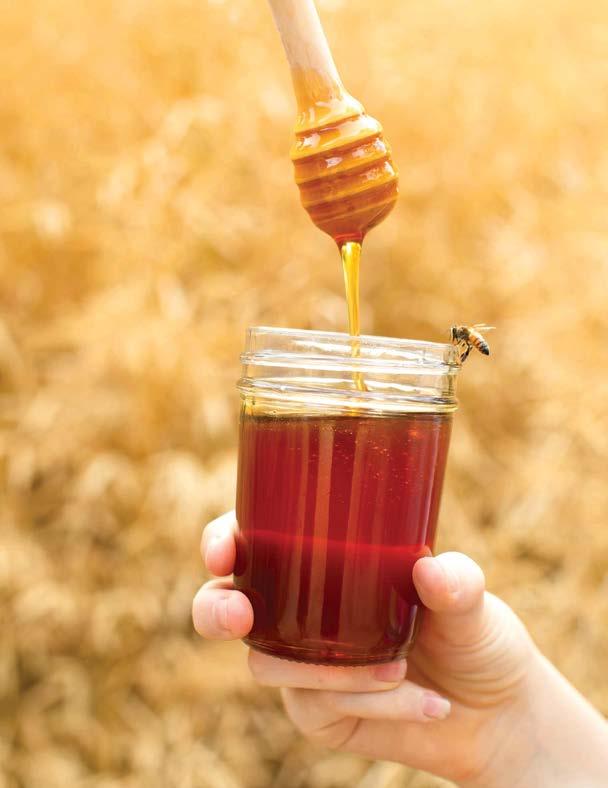
A final fun fact about honey: it never goes bad. It was used in ancient Egypt for embalming, and thousands of years later, offerings left in tombs that were cured or embalmed with honey are still preserved.
BEEKEEPING



Despite a growing interest in bees, beekeeping (or apiculture) is not something one can just decide to do without some prior research or experience. To keep bees safe and happy requires a lot of knowledge, time and care. They need to be near a reliable water source, and hives should be inspected regularly. At times, bees may need to be fed to keep them from swarming (or leaving in search of food or water).
Most beekeepers will tell you that they learned early on that protective equipment is necessary to handle the hives — or that they had to accept getting stung. Bees are defensive and aggressive, driven by their desire to protect the queen. A sting or two may not be a big deal for some, but for those with allergies, even just a few stings can be fatal.
Ironically, bee venom actually has many healthful properties. For centuries, it’s been used as a remedy for inflammation, arthritis, skin disease, immunity problems and pain.
If you’re craving some honey or seeking inspiration to dive into beekeeping yourself, check out these local Texans who are passionate about supporting the bee population and serving up their syrupy, sweet goodness in jar.
Dunsmore Honey is a family-owned small farm with a mission to raise healthy bees and produce raw honey. The family is driven by a love for nature, caring for the earth and a desire for homegrown, healthy food. Committed to improving the overall health of their environment, their farmland is dedicated to native Texas plants and wildlife. The bees that produce their honey are on their property, getting nourishment from the local pasture and forest land.
In 2014, Jason Dunsmore began beekeeping on their 12 acres in New Braunfels. He learned a lot — particularly about managing an apiary without chemical treatments and how to leave enough honey for the bees to eat themselves — from the local bee club, the San Marcos Bee Wranglers. Amy Dunsmore’s background is in environmental advocacy, animal behavior and ecology. The two met at The University of Texas Medical Branch, Galveston before attending graduate school together at University of California, Los Angeles. With the kitchen and garden as their current laboratories, the duo continues their scientific research, which nurtures their respect for the environment and guides their farming and honey-making methods.
“We minimally process the honey so that it contains every bit of pollen, antioxidants, vitamins, minerals, amino acids, enzymes, propolis and aromatics that bees collect from plants endemic to Edwards Plateau and the Blackland Prairie in the Balcones Canyonlands,” says Amy. This preserves the flavor and medicinal benefits of their raw honey. In addition to honey, they offer herbal elixirs, beeswax salves and balms, and honey blended with herbs and spices — all handmade at the farm. dunsmorehoney.com
“Our beekeeping journey started in the fall of 2012 when we took a beekeeping class at a local meadery. We were hooked!” says Tanya Phillips, master beekeeper and owner of Texas Honey Bee Farm. Phillips was particularly interested in the output from beehives that can be used for making skin care and health products. The current store, Texas Honey Bee Farm, opened in southwest Austin in 2019. The farm is home to up to 150 colonies that are for tours, classes, beeswax, pollen, honey and pollination of their garden and fruit tree They also have larger honeyproducing colonies around Southwest and East Austin.
“Honey is a perfect food,” says Phillips. “When you buy local wildflower honey, you are also getting a taste of the local pollen from the nearby flowers, which a lot of people say helps lessen their allergy symptoms. Besides honey, you can also buy a few other special things we, or the bees, make … like candles, raw beeswax, propolis tincture, raw pollen, lip balms, lotion bars, beeswax wraps and more.”
Texas Honey Bee Farm also offers educational opportunities, including beginning and handson beekeeping classes and occasional classes on honey harvesting and making products with beeswax.





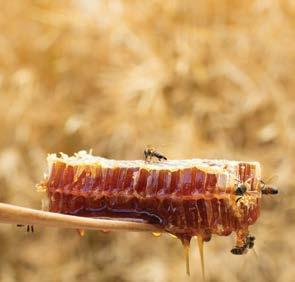
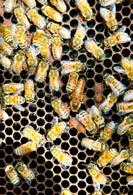
texashoneybeefarm.com
Chris and Kayla Anderson are making their property in Wimberley a wildlife-friendly environment. They’re early in their beekeeping endeavor, with six hives (that’s still about 200,000 bees). After acquiring their bees, they noticed almost immediately how healthy the plants and trees on the property became and that an abundance of wildflowers began popping up. They point to a grove of crepe myrtles that are blossoming in midAugust after a summer of record-breaking heat and almost no rain. Those conditions haven’t made it easy to keep the bees healthy. The couple had to skip the summer harvest because the bees needed the honey to survive. If their bees remain healthy, they expect to harvest about 10 gallons of honey from their small number of hives. For them, packaging 100+ jars is for now more than enough to offer friends and family and to supply a local restaurant or two. Chris has enjoyed learning about bees and honey, including the relatively simple process of getting the honey from the hive to the jar. “You pull the frames and take a fork to break the wax that caps the honey,” he explains. “But first you inspect to make sure there are no babies, and certainly not the queen, on the frame! And then you put it in [a device that] is like an old-fashioned ice cream maker. You put the frames in, turn the crank, and the honey slides to the bottom. You open the spigot and pour it into the jar.”
At the heart of the HIVE Bee Farm is Sandi Murray’s enjoyment of gardening and nature as well as her commitment to local, sustainable farming and food production. Before acquiring her first two hives in 2016, she did her homework. “It’s hard to really know what to expect and the commitment it takes until you’ve been around 60,000 stinging insects, in a bee suit, in 100+ degrees in the Texas summer,” says Murray. She recommends that anyone interested in beekeeping take a hands-on class, shadow an expert for a season and join their local beekeeping association. Her operation grew from two hives to over 200, spanning Montgomery, Harris and Fort Bend counties. Murray and partner Cyrus Nasr’s acreage in Montgomery is home to some of those hives as well as the workshop where they process the honeycomb and honey. The success of the different colonies is varied. “Each year is different and that variability in the weather, foraging opportunities and other pressures make it very challenging to predict what may impact the bees,” says Murray. “Unlike larger commercial bee companies that move bees across states to focus on specific commercial crops, our bees stay on a location permanently, enjoying the biodiversity of that environment.”
HIVE Bee Farm is committed to sustainable apiculture, which means they support hives that have a strong ability to adapt and forage effectively where they are. They do not provide supplemental feed or use any chemicals or antibiotics. Being in an urban environment, where properties are close to one another and chemical use is common, can make that challenging. “When a honey or native bee lands on a bloom that’s been sprayed, they take those chemicals back to their colonies with them and it can have disastrous effects — perhaps immediately killing the hive. And even cumulative exposure gradually impacts the health and genetics of the bees over time. As gardeners ourselves, I fully understand the reason behind reaching for the chemicals but know that those choices lead to long term challenges,” says Murray.
Murray finds beekeeping fascinating and rewarding, and she loves the honey! “Right now, we are big into using honey in our watermelon salad and in our homemade ice cream instead of sugar. Both are a great boost on these hot Texas days.”
hivebeefarm.com
Writer and editor Ashley Brown lives in Wimberley with her family of rescues: a dog, two cats, and two donkeys. In addition to animal welfare, her passion is exploring the Hill Country's natural beauty, small farms, eateries and drinkeries.
